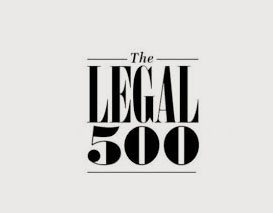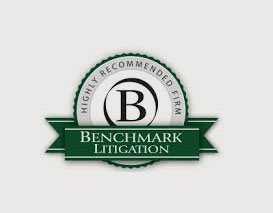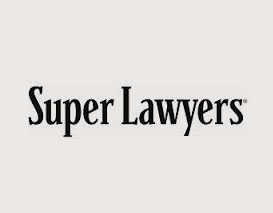Statute of Limitations: Accrual for Breach of Fiduciary Duty Claims
Print Article- Posted on: Jun 9 2025
By: Jeffrey M. Haber
In New York, litigants often grapple with the appropriate limitation period to apply to breach of fiduciary claims. There is no single statute of limitations that the courts and the parties can look to. “Rather, the choice of the applicable limitations period depends on the substantive remedy that the plaintiff seeks.”[1] “Where the remedy sought is purely monetary in nature, courts construe the suit as alleging ‘injury to property’ within the meaning of CPLR 214 (4), which has a three-year limitations period.”[2] “Where, however, the relief sought is equitable in nature, the six-year limitations period of CPLR 213 (1) applies.”[3] Moreover, “where an allegation of fraud is essential to a breach of fiduciary duty claim, courts have applied a six-year statute of limitations under CPLR 213 (8).”[4]
In considering the appropriate limitations period, the courts are careful not to elevate form over substance. Thus, for example, where a plaintiff uses “the term ‘disgorgement’ instead of other equally applicable terms such as repayment, recoupment, refund, or reimbursement,” it “should not be permitted to distort the nature of the claim so as to expand the applicable limitations period from three years to six.”[5]
The initial burden of establishing that the limitations period bars the challenged claim is on the movant.[6] “To meet its burden, the defendant must establish, inter alia, when the plaintiff’s cause of action accrued.”[7] “A breach of fiduciary duty claim accrues where the fiduciary openly repudiates his or her obligation – i.e., once damages are sustained.”[8] This is so because, “absent either repudiation or removal, the aggrieved part[y] [is] entitled to assume that the fiduciary would perform his or her fiduciary responsibilities.”[9] “Open repudiation requires proof of a repudiation by the fiduciary which is clear and made known to the beneficiaries.”[10] “Where there is any doubt on the record as to the conclusive applicability of a [s]tatute of [l]imitations defense, the motion to dismiss the proceeding should be denied, and the proceeding should go forward.”[11]
As readers might expect, the determination of when a claim accrues is not always easy. Not surprisingly, the reporters are brimming with cases in which the courts have to decide when a claim accrues for statute of limitations purposes. One such case was recently decided by the Appellate Division, Third Department in Lambos v. Karabinis, 2025 N.Y. Slip Op. 03367 (3d Dept. June 5, 2025) (here).
Lambos was shareholder derivative action, brought both individually and as a shareholder of B.K. Associates International, Inc. (“BK”), in connection with certain loan transactions for which plaintiff claimed defendants breached their fiduciary duties and engaged in corporate waste.
BK was formed in 1989 for the purpose of, among other things, engaging in the business of importing and exporting coffee and coffee products. In September 2008, plaintiff merged his own coffee distribution business into BK in exchange for 33⅓% of BK’s shares. Defendants retained the remaining 66⅔% of the shares. Plaintiff was designated as vice president and elected to the board of directors. It was also agreed that plaintiff would receive a $1,500 weekly distribution for managing BK’s warehouse.
Between 2008 and 2015, BK engaged in a series of interest-bearing loan and repayment transactions with PK & FV Restaurant Corp. and BAK Realty, LLC, businesses in which one of the defendants had a financial interest. The extent of plaintiff’s knowledge of these transactions was controverted by the parties.
In November 2019, BK sold its assets to a third-party purchaser for $1.5 million in an arm’s-length transaction signed by all shareholders of BK, including plaintiff. Defendants informed plaintiff that, after repayment of corporate debts, he would receive approximately $65,000.
In July 2020, plaintiff, in writing, demanded to inspect, among other things, BK’s financial records. Through various correspondence with BK’s counsel in August and September 2020, BK informed plaintiff that it would allow him to inspect, among other things, minutes of shareholder meetings, records of shareholders, a select promissory note and tax return, but would not allow him to inspect BK’s financial records.
Shortly thereafter, plaintiff commenced a CPLR article 78 proceeding against defendants seeking to compel BK to allow him to inspect the company’s financial records (the “discovery proceeding”). In March 2023, the parties to the discovery proceeding stipulated that defendants would search for relevant bank statements and contact BK’s accountant for relevant financial statements beginning in 2008 and deliver any recovered records to plaintiff.
On July 19, 2023, plaintiff commenced the action, asserting causes of action for breach of fiduciary duty and corporate waste. Plaintiff requested both monetary and injunctive relief. Defendants moved pre-answer to dismiss the complaint pursuant to CPLR 3211 (a) (1), (5) and/or (7), which plaintiff opposed. Supreme Court granted the motion and dismissed the complaint with prejudice, finding that the applicable statute of limitations was three years and, as such, the action was untimely. Plaintiff appealed. The Appellate Division, Third Department reversed.
The Court held that “defendants did not proffer, or even assert, that they [had] openly repudiated their obligations as fiduciaries or that the relationship [had] otherwise terminated.”[12] The Court noted that “at oral argument, defendants’ attorney conceded that all fiduciary duties still exist[ed] as the corporation ha[d] not yet been dissolved.”[13] “As such,” said the Court, “plaintiff’s breach of fiduciary duty claims ha[d] not yet begun to accrue.”[14]
The Court rejected defendants’ assertion “that a co-fiduciary cannot rely on open repudiation to toll the statute of limitations.”[15] Such an argument, said the Court, “is not supported by our case law.”[16] The Court also rejected the notion that the open repudiation rule placed an affirmative duty on the plaintiff “to exercise due diligence in order to benefit from this toll.”[17] In doing so, the Court made the distinction between the open repudiation rule and “the discovery accrual rule in fraud cases.”[18] “Therefore,” concluded the Court, “the Supreme Court erred in granting that aspect of defendants’ motion.”[19]
The Court also held that the motion court “erred in determining that plaintiff failed to state a cause of action.”[20] That ruling was based on sworn testimony that was supported by documentary evidence, e.g., annual statements and tax returns, and plaintiff’s concession that “that he did not review” such evidence.[21] However, the Court noted that “in his sworn deposition from the discovery proceeding, [plaintiff] testified that he did not receive the relevant documents and, other than their own self-serving statements, defendants did not provide documentary proof that these documents were actually sent to plaintiff.”[22] The Court found that the documents did not “‘unequivocally disprove the allegations … set forth in the complaint,” and therefore held that there was “no basis for dismissal pursuant to CPLR 3211 (a) (7).”[23]
Takeaway
In New York, the statute of limitations for breach of fiduciary duty claims depends on the remedy sought: three years for monetary relief, six years for equitable relief or fraud-based claims. As discussed, the claim accrues when the fiduciary openly repudiates their duty or when damages occur.[24] In Lambos, the Court ruled that defendants’ fiduciary duties had not been openly repudiated, so the statute of limitations had not begun to run. The Court therefore reversed the motion court’s dismissal of the complaint, emphasizing that defendants failed to prove the claim was time-barred and that factual disputes precluded dismissal for failure to state a claim. In many ways, Lambos underscores the nuanced accrual determinations that courts must make.
___________________________________________
Jeffrey M. Haber is a partner and co-founder of Freiberger Haber LLP. This article is for informational purposes and is not intended to be and should not be taken as legal advice.
[1] IDT Corp. v. Morgan Stanley Dean Witter & Co., 12 N.Y.3d 132, 139 (2009) (citations omitted).
[2] Id.; see also VA Mgt., LP v. Estate of Valvani, 192 A.D.3d 615, 615 (1st Dept. 2021).
[3] Id.
[4] Id.
[5] Access Point Med., LLC v. Mandell, 106 A.D.3d 40, 44 (1st Dept. 2013); see also VA Mgt., 192 A.D.3d at 615 (stating that “[p]laintiff’s characterization of that relief as ‘disgorgement’ of [the defendant’s] compensation does not convert it into a claim for equitable relief to which the six-year statute of limitations would apply”) (citations omitted)).
[6] Lebedev v. Blavatnik, 144 A.D.3d 24, 28 (1st Dept. 2016) (internal quotation marks and citations omitted).
[7] Id.
[8] Id. Importantly, “[t]o determine timeliness, [the court] consider[s] whether [the] plaintiff’s complaint must, as a matter of law, be read to allege damages suffered so early as to render the claim time-barred.” IDT, 12 N.Y.3d at 140.
[9] Matter of George, 194 A.D.3d 1290, 1293 (3d Dept. 2021) (internal quotation marks, brackets and citation omitted).
[10] Matter of Steinberg, 183 A.D.3d 1067, 1071 (3d Dept. 2020) (internal quotation marks and citations omitted).
[11] Matter of Behr, 191 A.D.2d 431, 431 (2d Dept. 1993) (internal citations omitted); see Matter of Steinberg, 183 A.D.3d at 1071.
[12] Slip Op. at *2.
[13] Id.
[14] Id. (citations omitted).
[15] Id.
[16] Id. (citing Matter of Twin Bay Vil., Inc., 153 A.D.3d 998, 1001 (3d Dept. 2017), lv. denied, 31 N.Y.3d 902 (2018)).
[17] Id.
[18] Id. at *2-*3 (comparing Matter of Twin Bay Vil., 153 A.D.3d at 1001 and Matter of Therm, Inc., 132 A.D.3d 1137, 1138 (3d Dept. 2015) with Kaufman v. Cohen, 307 A.D.2d 113, 122-123 (1st Dept. 2003), and Ghandour v. Shearson Lehman Bros., 213 A.D.2d 304, 305-306 (1st Dept. 1995), lv. denied, 86 N.Y.2d 710 (1995)).
[19] Slip Op. at *3.
[20] Id.
[21] Id.
[22] Id.
[23] Id. (quoting Lopes v. Bain, 82 A.D.3d 1553, 1555 (3d Dept. 2011); and citing State Farm Fire & Cas. Co. v. Main Bros. Oil Co., 101 A.D.3d 1575, 1579 (3d Dept. 2012)).
[24] To find articles related to the statute of limitations for breach of fiduciary duty claims and when that claim accrues, visit the “Blog” tile on our website and enter the search terms “breach of fiduciary duty,” “accrual,” and “statute of limitations” or any other related search term in the “search” box.
Tagged with: Accrual, Breach of Fiduciary Duty, Civil Practice Law and Rules, Shareholder Derivative Litigation, Statute of Limitations





